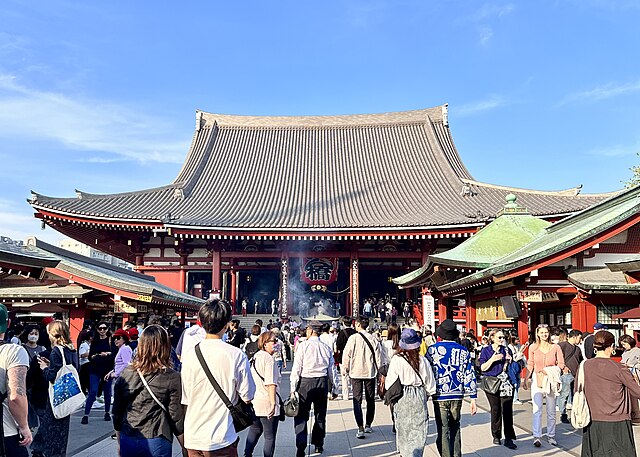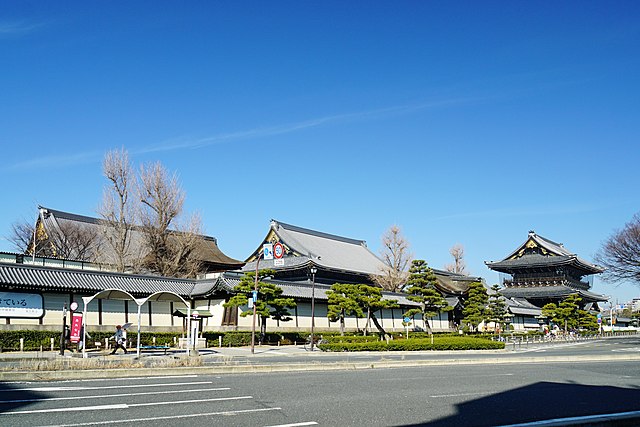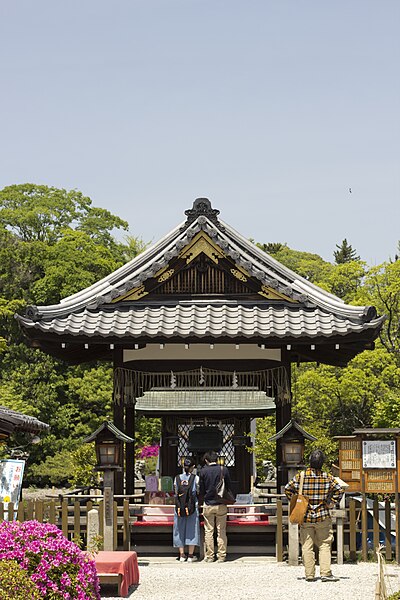Sensō-ji , is an ancient Buddhist temple in Asakusa, Tokyo, Japan. It is Tokyo's oldest-established temple, and one of its most significant. It is dedicated to Kannon, the bodhisattva of compassion. Structures in the temple complex include the main hall, a five-story pagoda and large gates. It is the most widely visited religious site in the world with over 30 million visitors annually.
Sensō-ji Main Hall in 2023
Colored print of Sensō-ji temple, by Aōdō Denzen (亜欧堂田善), circa 1809
The green-roofed shops of Nakamise-dōri leading to the temple
Kaminarimon. A statue of Fūjin stands on the right and that of Raijin on the left.
Buddhist temples in Japan
Buddhist temples or monasteries are the most numerous, famous, and important religious buildings in Japan. The shogunates or leaders of Japan have made it a priority to update and rebuild Buddhist temples since the Momoyama period. The Japanese word for a Buddhist monastery is tera (寺), and the same kanji also has the pronunciation ji, so temple names frequently end in -dera or -ji. Another ending, -in (院), is normally used to refer to minor temples. Examples of temple names that have these suffixes are Kiyomizu-dera, Enryaku-ji and Kōtoku-in.
Higashi Hongan-ji in Kyoto
A torii at the entrance of Shitennō-ji, a Buddhist temple in Osaka
Honden of the Zennyo Ryūō shrine, inside a Shingon temple in Kyoto
A Buddhist-style gate (karamon) at Iwashimizu Hachiman-gū








